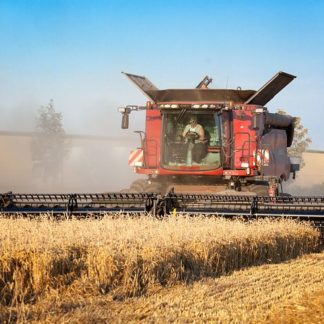Description
Learn Mid-West Farm-Belt Accent
WHAT WILL YOU DOWNLOAD?
The download to Learn the Mid-West Accent of the American Farm Belt contains fifty-nine (59) minutes of systematic instruction in MP3 sound files. You’ll also get a printable PDF of the instruction manual. It contains summaries of the audio lessons and full transcripts of the drill words, phrases, and passages.
WHAT WILL YOU LEARN?
You will learn a general “Mid-West” American accent, heard in a very large section of the country often called the “Farm Belt.” The pattern is not identical in every part of this region, so we are going to deal with different intensities of a general Farm-Belt sound. This should suffice for characters native to the area from Ohio to Colorado and Nebraska to Kansas and central Missouri. Here’s a brief summary of the training.
- Lesson 1 teaches you the mouth posture and movements that create the resonance or voice placement of the Farm-Belt accent.
- The 2nd Lesson deals with this accent’s lilts/inflections within stressed vowels.
- Lesson 3 shows you how to embed target Farm-Belt vowels into the placement and inflections you learned earlier. It also emphasizes the differences between Farm-Belt and Southern pronunciations of several sounds. This is an important distinction for avoiding having mid-Western characters morph into Southerners.
- The Final Lesson puts it all together with several drill passages. Firstly, it reminds you about the voice placement. Further, it walks you through the pronunciation phrase by phrase before leading you into a normal speaking pace.
MORE ABOUT THE FARM-BELT ACCENT
Many actors (and others) confuse or are not clear about the differences between “Farm-Belt” and “American Southern” accents. Some of the vowels are similar. In addition, the voice placement of this region is similar to that of some Southern sub-regions. The general impression of this accent is relatively constant throughout the region, with greater intensities occurring in rural than in more urban areas. You may sometimes be asked by a director or casting director for an accent that’s “rural, but not Southern.” In such cases, this mid-West sound would likely fill the bill. Therefore, it’s important that you know and master the differences between “Southern” and “Mid-West” patterns. There is an overview of these differences early in this program and many differentiation drills throughout the lessons.
LEARNING MID-WEST ACCENT FOR TODAY’S ACTORS
- There are many contemporary plays (TV shows as well) set in the Farm Belt. Several plays by William Inge (Bus Stop, Picnic) take place in Kansas. Any plays based on or adapted from Tom Sawyer and Huckleberry Finn might use the non-Southern Missouri sound. This would include Bernard Sabath’s The Boys in Autumn, which reunites Tom and Huck as adults. Of course, many “Western” films and TV shows were set above the Mason-Dixon line, where this accent would prevail.
- To do or not to do this accent? The “correct” accent isn’t identified or expected for Farm-Belt characters to the degree they are for New Yorkers and Southerners. So, directors must make artistic decisions about whether actors should use this accent or suffice with middle-of-the-road, non-regional sound. You and your director must ask, “Will the accent, if done well, help develop the setting and give useful dimension to the character(s)?”




